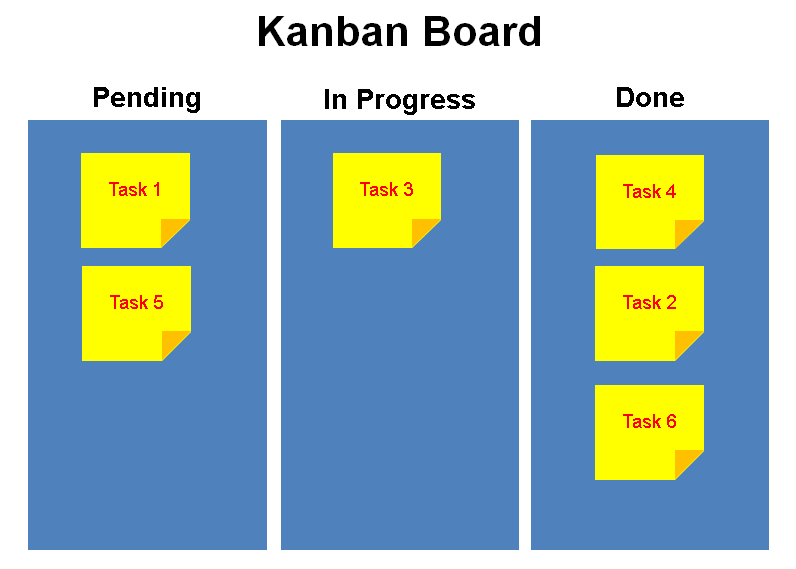Kanban
It is a system that uses visual cues to move and produce materials so that inventory is maintained at optimal levels.
Kanban is a workflow management system for lean manufacturing and just in time (JTI) solutions. It was originally developed by Toyota.
The Japanese word kanban means billboard, sign or hoarding. It is also used when referring to the person in charge of warming sake in a bar.
Core principles
- Start with what is in place - Kanban can be implemented over the top of what is already there. This means it can be introduced gradually without disrupting existing processes.
- It is an incremental change - There are no sweeping changes at any point. Change is steady
- The current process, responsibilities and roles will be respected - The assumption is that existing system works. Any alterations will be made to improve rather than replace existing processes.
- Leadership should be encouraged at all levels - Suggestions for improvement can come from anyone.
Practices
Visualise the Workflow
The first and critical step is to identify what happens to get an item from customer request to delivery.
To visualise this, set up a board with cards and columns. Each column is a step in the workflow. Each card represents a work item.
For example, when work starts on an item, the card for it will be moved from the "Pending" column to "In Progress". This makes it easy to track the item and identify bottlenecks.
Limit Work in Progress (WIP)
There must be a manageable number of active items in progress at a time. If no limits have been set, then kanban is not being done.
Having a team switch from one item to another will usually slow things down, degrade efficiency and increases the risk of waste.
The limit on work in progress on each stage ensures that an item will only move from one step to the next when there is spare capacity. A problem area is easily identified by the defined limits being exceeded.
Manage Flow
A smooth flow of items through the production process is the reason for implementing kanban
The aim is to manage the process by understanding what will make items go through the various steps faster.
Explicit Policies
Since anyone can and should participate in improving the overall process, it should be clearly defined, distributed and discussed. Employees cannot contribute meaningfully to something they do not understand.
Feedback Loops
So that improvements are successfully implemented and continue to happen, regular meetings need to be held to transfer knowledge.
The frequency will depend on business specific factor, but the meetings should be regular, at a fixed time, focussed and short.
Improve & Evolve
By promoting an understanding of the reasoning behind continuous improvement, a shared vision for a better future and how to achieve it is far more likely to be accepted as a good thing and positive contributions made towards it.


